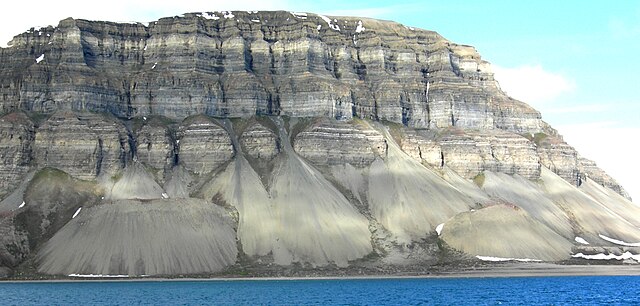Sand boils, sand volcanoes, or sand blows occur when water under pressure wells up through a bed of sand. The water looks like it is boiling up from the bed of sand, hence the name.
Sand boils that erupted during the 2011 Canterbury earthquake.
Attempts to plug a sand boil with sandbags during the 2011 Missouri River floods. Many of the attempts were unsuccessful.
Sand boils and a silt-covered street after the 2011 Canterbury earthquake.
Cross section of a sand volcano in County Clare, Ireland
The angle of repose, or critical angle of repose, of a granular material is the steepest angle of descent or dip relative to the horizontal plane on which the material can be piled without slumping. At this angle, the material on the slope face is on the verge of sliding. The angle of repose can range from 0° to 90°. The morphology of the material affects the angle of repose; smooth, rounded sand grains cannot be piled as steeply as can rough, interlocking sands. The angle of repose can also be affected by additions of solvents. If a small amount of water is able to bridge the gaps between particles, electrostatic attraction of the water to mineral surfaces increases the angle of repose, and related quantities such as the soil strength.
Talus cones on north shore of Isfjord, Svalbard, Norway, showing angle of repose for coarse sediment
This pile of corn has a low angle of repose
Sand pit trap of the antlion
Image: Sandpile Matemateca 03








